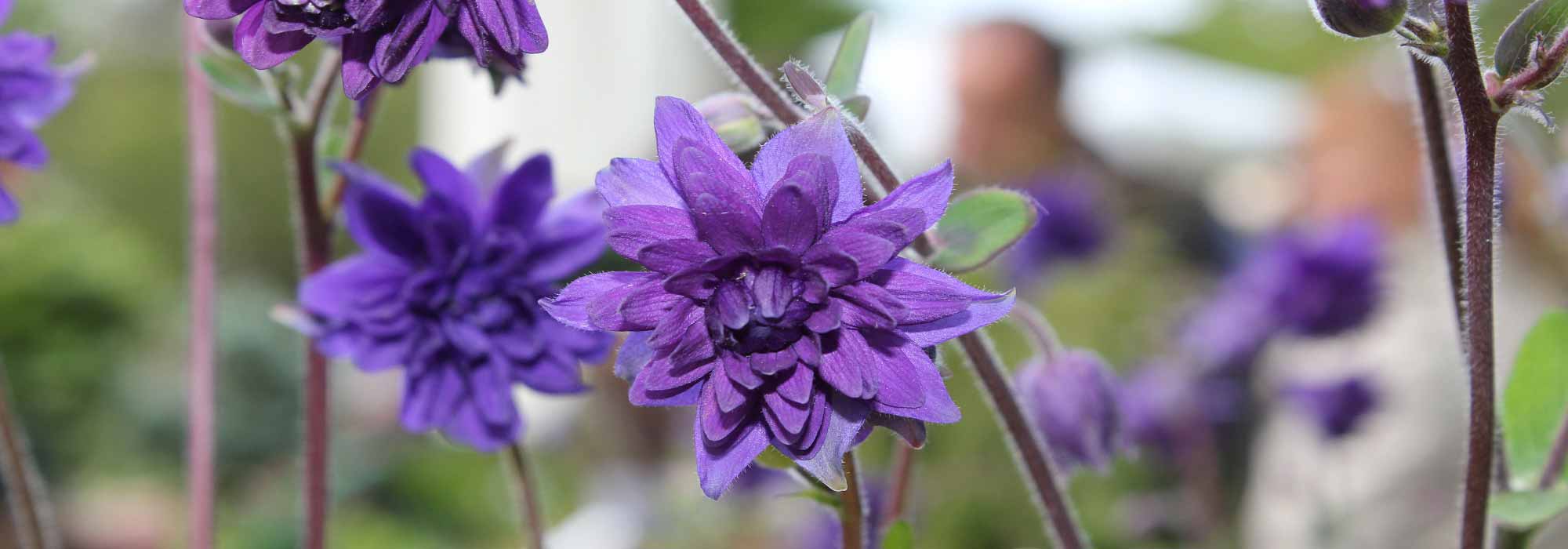
Choosing an aquilegia
Our buying guide to make the right choice
Contents
Aquilegias, herbaceous perennial plants, emerge after spring flowerings to bring colour to the garden, typically in late spring and early summer, and even later for some species. In addition to the common aquilegia (Aquilegia vulgaris), which is grown as a wild aquilegia in gardens, there are many varieties. Easy to cultivate, they form clumps of stems with rounded, light green leaves, varying in height depending on the varieties, and come in a multitude of shades. Hardy, they are essential for brightening up balconies and gardens, appreciated for both their elegance and grace.
With choices of colour, size, shape, and even flowering period, we will help you select the aquilegia that will enhance your borders and pots!
According to the colour of the flowers
Columbines (Aquilegia) offer a very wide range of colours. Whether solid or bicoloured, gardeners have plenty of options to create monochromatic or multicoloured combinations. Blue columbine, black columbine, white columbine—there’s a vast choice among the following shades:
Blue columbine
The Aquilegia alpina and Aquilegia ‘Clementine Blue’ produce flowers of a beautiful, vibrant blue, while the columbine ‘Blue Barlow’ develops pale blue flowers.
Pink columbine
In romantic gardens, grow Aquilegia vulgaris ‘Rose Barlow’ or ‘Clementine Salmon Rose’, in light pink tones.
White columbine
The’Aquilegia caerulea ‘Kristall’ is covered in white flowers with a light yellow centre, while the Aquilegia stellata ‘White Barlow’, ‘Green Apples’, or ‘Clementine White’ offer inflorescences of a very pure white.
Purple columbine
Dare to choose varieties with purple flowers, such as the columbine vulgaris ‘Ruby Port’, or inflorescences approaching black with yellow stamens at the centre by cultivating the Aquilegia atrata, ‘Black Barlow’, or ‘Clementine Dark Purple’.
Yellow columbine
The Aquilegia chrysantha ‘Yellow Queen’ or ‘Sunshine’ will develop flowers in a shade of yellow that is unexpected for columbines.
Bicoloured columbine
Indulge in the mix of blue and white with the Aquilegia flabellata ‘Ministar’ or ‘Winky Blue White’. The Aquilegia canadensis ‘Little Lanterns’ will offer pendulous bicoloured flowers, a mix of red and yellow. As for the columbine ‘Crimson Star’, it features large bicoloured flowers, red and white, that are very graphic. The choice is vast!
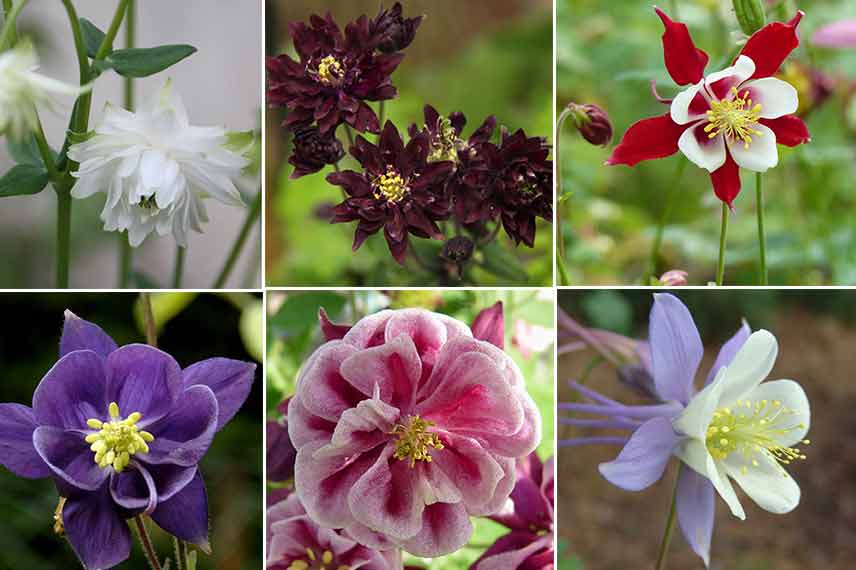
The columbine ‘Green Apples’, ‘Clementine Dark Purple’, ‘Crimson Star’, alpina, ‘Winky Red White’, and ’Blue Star’ (from left to right and top to bottom)
Read also
Columbines: sowing, planting and careAccording to the shape of the flowers
Columbines produce both double and single flowers. You will find several forms of columbines, such as:
- small frilly single pom-poms with Aquilegia vulgaris ‘Ruby Port’, stellata ‘White Barlow’, or doubles with ‘Rose Barlow’
- pendulous bells with Aquilegia atrata or ‘Chocolate Soldier’
- the cornet shape with long spurs, crimson red with a white corolla featuring ‘Crimson Star’, and dark violet with a white corolla featuring ‘William Guiness’
- long thread-like spurs with Aquilegia chrysantha ‘Yellow Queen’ or longissima
- ‘Granny’s Bonnet’, also known as “grandmother’s bonnets”, with multicoloured double flowers.
To vary the silhouette of your columbine plants, mix them between pendulous and upright flowers, depending on the varieties. Opt for ‘Black Barlow’, in purple; ‘Ministar’, in blue and white bicolour; or ‘Chocolate Soldier’, with its clusters of brown-purple flowers, all featuring pendulous blooms. Pair them with upright varieties like ‘Winkly Double Red White’, white tinged with pink, or ‘Salmon Rose’, a very poetic salmon pink.
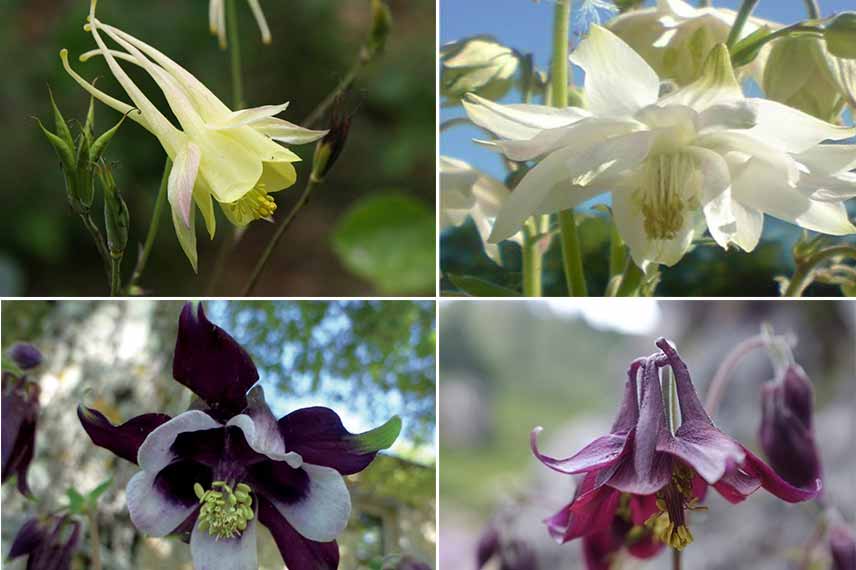
Different flower forms with Aquilegia ‘Yellow Queen’, ‘White Barlow’, ‘William Guiness’ and atrata
Discover other Aquilegia
View all →Available in 0 sizes
Available in 0 sizes
Available in 1 sizes
Available in 0 sizes
Available in 0 sizes
Available in 2 sizes
Available in 1 sizes
Available in 1 sizes
Available in 1 sizes
Available in 1 sizes
According to the size of flowers
A plant of columbine is covered with a multitude of flowers of varying sizes depending on the cultivated varieties. Mostly, the flowers measure between 2 and 4 cm in diameter, as seen in the following varieties:
- viridiflora ‘Chocolate Soldier’ or canadensis ‘Little Lanterns’, which offer small flowers of 2 cm
- atrata, stellata ‘White Barlow’ or even ‘Blue Barlow’, which develop flowers of 3 cm
- flabellata ‘Ministar’ or vulgaris ‘Crimson Star’, which bear flowers of 4 cm
- and the variety ‘Ruby Port’ is the exception with double flowers of about 7 cm.

Columbine ‘Little Lanterns’, ‘Crimson Star’ and ‘Ruby Port’
According to the height of the plant
Columbines form upright clumps of leaves and flower spikes that vary between 15 and 80 cm in height. If they are happy, they can sometimes reach 1 metre. Depending on their height, you can place them in the foreground or background of a border, or create colourful carpets, so make the right choice of varieties based on the intended final use for the columbines. Here are some height indications:
- 15 cm with dwarf and compact forms such as columbine flabellata ‘Ministar’ or flabellata ‘Nana Alba’
- 30 cm with medium heights such as Aquilegia viridiflora ‘Chocolate Soldier’, canadensis ‘Little Lanterns’ or sibirica
- 60 to 70 cm with columbine caerulea ‘Kristall’, vulgaris ‘Green Apples’, vulgaris ‘Rose Barlow’, vulgaris ‘Crimson Star’
- 80 cm with the tall form of columbine atrata.
According to the flowering period
The flowering of columbines generally occurs in spring, from April to June. Some columbines bloom for a longer period, until July or even September. Let yourself be tempted to brighten up the garden during this pause!
Here are some flowering periods to play with in order to extend the cultivation of columbines:
- early flowering from April to June with the ‘Chocolate Soldier’ columbine
- flowering from May to June with Aquilegia caerulea ‘Kristall’, atrata, ‘White Barlow’ or vulgaris ‘Green Apples’
- flowering from May to July with the ‘Ruby Port’ columbine, ‘Rose Barlow’, ‘Blue Barlow’ or ‘Black Barlow’
- late flowering from June to September with ‘Tequila Sunrise’
According to its uses
Often found in our grandmothers’ gardens, columbines are versatile and bring lightness and whimsy to a garden cultivated in cool, semi-shaded areas. Play with heights to flower a bed of perennial plants or annuals, a woodland bed, a rockery, or a slope, using them in the foreground or background depending on the varieties. You can also create original borders.
- To flower a woodland area, play with the white of ‘Munstead White’, the purple of ‘Blue Barlow’, and the salmon pink and lavender-tinted pink of ‘Clementine Salmon’;
- To add colour to beds, choose varieties like ‘Snow Queen’, with white flowers; ‘Crimson Star’, with crimson red spurs and white corolla; ‘William Guiness’, with graphic dark violet flowers and a white corolla;
- To give relief to a rockery, grow ‘Chocolate Soldier’ with fragrant chocolate-coloured flowers; ‘Rose Barlow’ with double pink flowers; or ‘Ministar’ with bright blue inflorescences. In the garden, columbines tend to self-seed easily and will colonise the space. Let nature take its course!
- Also grow columbines in pots or window boxes if you have a balcony or terrace. All varieties will suit this method of cultivation, ensuring good exposure and watering.
Feel free to create bouquets. Columbines hold well as cut flowers in a vase.
Read our pairing ideas.
To discover
For enthusiasts of original columbines, let yourself be charmed by the columbine fragrans, which produces large, fragrant white and light yellow flowers.
- Subscribe!
- Contents

































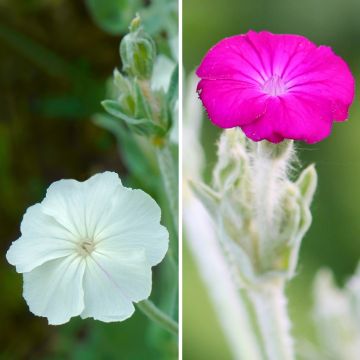
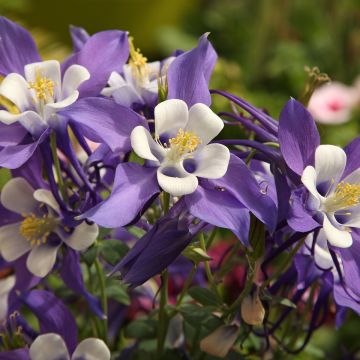
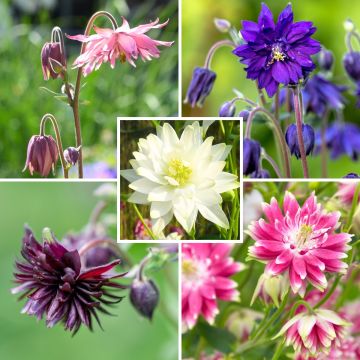
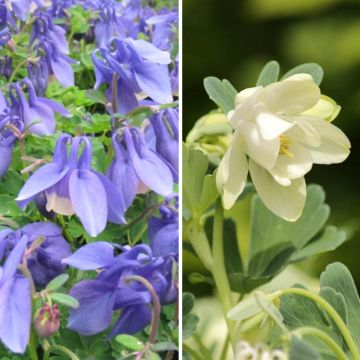
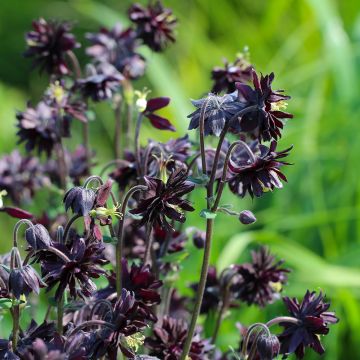


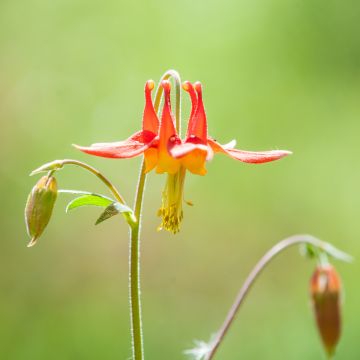

Comments